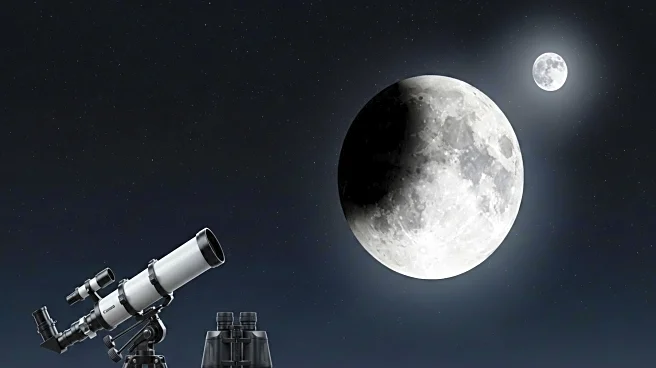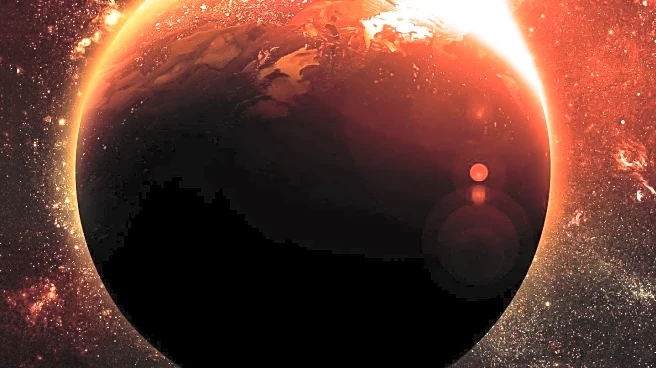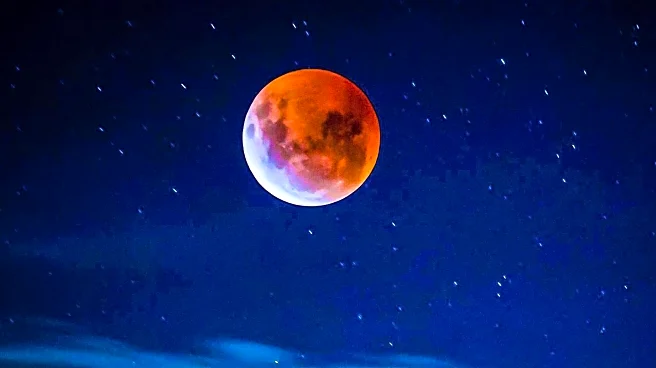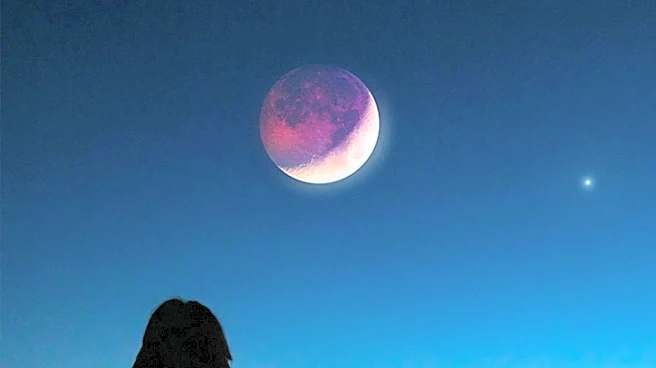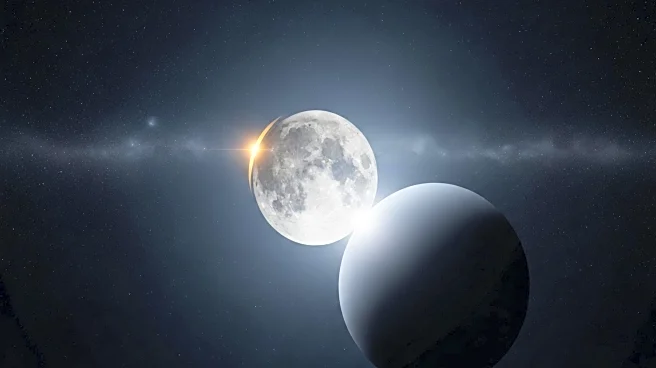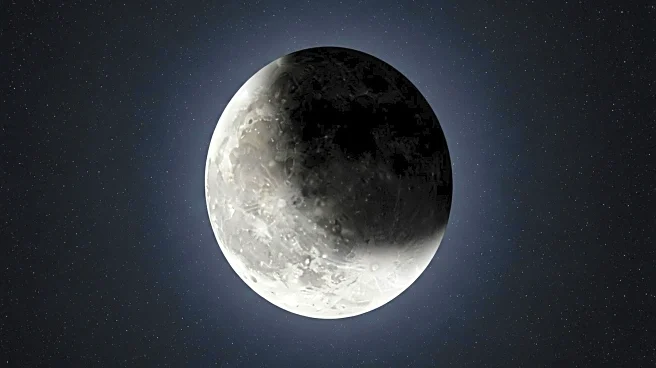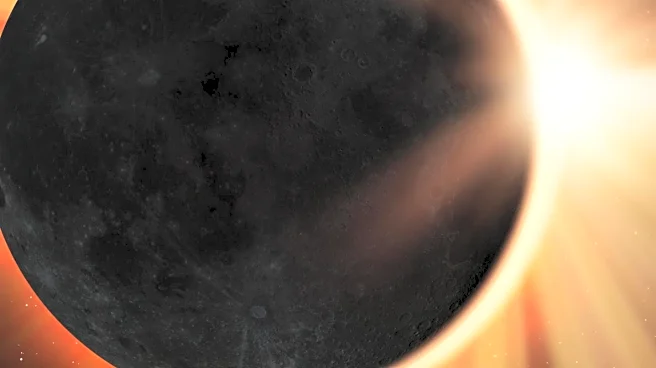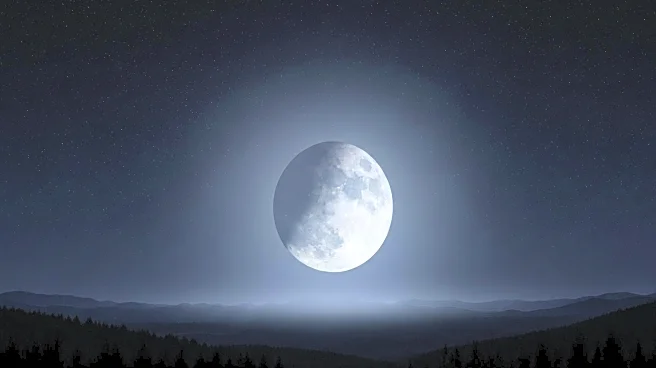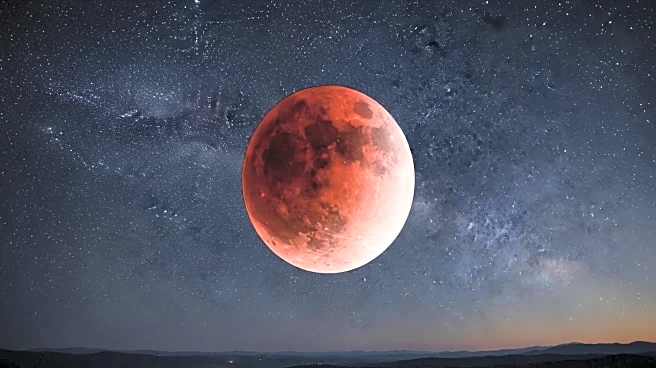What's Happening?
NASA has announced details about upcoming lunar eclipses, including a total lunar eclipse that will not be visible in the United States this September. The eclipse, often referred to as a 'blood moon' due to its reddish hue, will be visible in parts of Asia, East Africa, and Australia. The phenomenon occurs when the Earth is positioned between the sun and the full moon, causing the moon to appear red as sunlight passes through Earth's atmosphere. The next opportunity for Americans to view a total lunar eclipse will be on March 3, 2026, followed by a partial eclipse on August 27-28, 2026. The intensity of the moon's color during an eclipse depends on atmospheric conditions, such as the amount of dust or clouds present.
Why It's Important?
Lunar eclipses are significant astronomical events that offer unique opportunities for scientific observation and public engagement with space science. While this particular eclipse will not be visible in the U.S., it highlights the global nature of astronomical phenomena and the interconnectedness of scientific communities worldwide. For the U.S., the anticipation of future visible eclipses can stimulate interest in astronomy and space exploration, potentially inspiring educational initiatives and public events. Additionally, understanding atmospheric conditions during such events can contribute to broader climate and environmental studies.
What's Next?
Americans will have to wait until March 2026 for the next visible total lunar eclipse. In the meantime, NASA and other space agencies may continue to provide live streams and educational content to engage the public. These events can serve as catalysts for educational programs and community gatherings focused on astronomy and space science. As the dates approach, there may be increased media coverage and public interest, leading to organized viewing events and educational workshops.
Beyond the Headlines
Lunar eclipses, while visually captivating, also offer scientists a chance to study the Earth's atmosphere. The color and brightness of the moon during an eclipse can provide data on atmospheric composition and pollution levels. This can have implications for climate science and environmental monitoring. Furthermore, such events can foster international collaboration in space science, as researchers and enthusiasts from different countries share observations and data.
